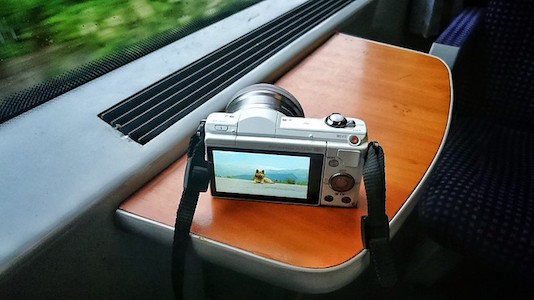The Sony a7C is a misunderstood camera. It’s currently the smallest full frame camera on the market with a lot of the internals of the three year old a7III but the a7C is a step up, depending on the direction you’re coming from. A lot of other reviews focus on how the a7C compares to other full frame cameras but if you’re using another sensor altogether, Sony’s developed a very nice step up.
You can watch my full review in the video here or read on.
A Little Basics
So what’s the big deal about full frame? The term full frame comes from film cameras and refers to the sensor in the camera. Light comes in through the lens and hits the sensor, then magic happens and there’s a photo or video. Full frame is a big sensor. Big sensors have more surface area to capture light. There’s also other types of sensors, like micro fourth thirds (1/4th the size of full frame). Smaller sensor means less light. More light typically results in better photos and video. Then why would you ever get a smaller sensor?
Smaller sensors mean smaller cameras and lenses that also weigh less. Smaller sensors are usually less expensive too.
The a7C though is beginning to change that equation.
Minimizing Form Factor
Although it’s not a particularly petite camera compared to a smartphone or point and shoot, the a7C body is 12.4 x 7.1 x 6 centimeters and weighs 509 grams. It is weather and dust resistant, shoots 4K (up to 30fps with a 1.2x crop or 24fps without one), and has a screen that flips to the side. The latter, I point out because Sony’s have traditionally used flip up screens, making it hard to vlog if you’re using an external microphone.

The auto-focus is amazing in every way, colors are rendered nicely, and you can trust all of the auto settings if you want to use them. Auto white balance is especially accurate but for times you want to adjust the ISO or heavily color correct during editing, there is S-Log3.
Customizing Experience
To cut down in size, Sony’s moved the viewfinder off to the left and it’s so small, it’s practically useless. A variety of custom buttons have also not been included (like some of Sony’s larger full frame cameras) but you can map the buttons on the back to anything you want. Sony’s also included a quick function menu as well so you can change the settings you most frequently adjust fast on the fly.
These are all tradeoffs though that narrow the gap between power and portability. With the tiny 28-60mm kit lens the a7C is designed to be as customizable as possible in a smaller form factor. The grip isn’t as big as it could be but for most people, it won’t be a deal breaker. A large battery gives you an impressive 740 shots or 3 hours of video recording.
Additionally, the a7C can save you from bringing a number of accessories thanks to what the USB-C port can do. Charging the camera directly from your laptop and being able to live stream without an Elgato Cam Link is incredibly useful. And that equation I mentioned earlier? Well, the a7C is small, light, and less expensive than previous entries into full frame. It won’t replace your larger Sony camera but if you’re moving into the full frame world, the a7C is a great first step.












